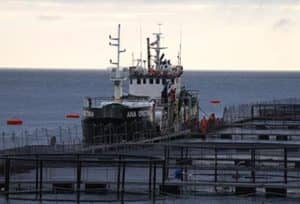Mortality represents 1.4 per-cent of the company’s total fish in the water and 2.9 per-cent of the total biomass.
The event affected two seawater sites Nieves and Puerto Argentino, Southern Chile.
The mortality occurred specifically because of the Lepidodinium Chlorophorum microalgae bloom in the fjord, which has been present for several weeks.
In a statement, Salmones Camanchaca wrote that the algae bloom events became more severe on March 8th, and as of March 15th, this resulted in a loss of 162,000 Atlantic salmon.
“The loss of biomass and expenses associated with the incident will have an estimated financial impact estimated to date at close to USD 3.5 million, the corresponding insurances were activated in a timely manner, and the estimated annual harvest volume has been impacted by a range of 500 to 1,000 tonnes, which is close to 1-1.5 per-cent of the total estimated harvest in 2021,” wrote Salmones Camanchaca.
The salmon farmer informed authorities, with whom it has maintained communication and monitoring of the situation. Salmones Camanchaca is setting up a contingency plan to remove the lost biomass, which will be disposed of in specialised facilities.


